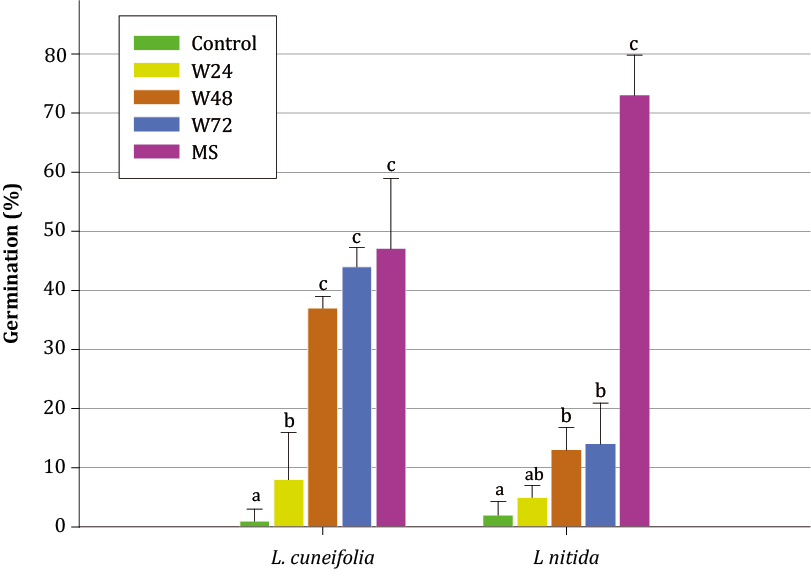Germination temperatures and seed dormancy of two Larrea species (Zygophyllaceae) from the Monte Desert, Argentina
Keywords:
germination inhibitors, Larrea cuneifolia, Larrea nitida, optimum temperature, physical dormancyAbstract
The genus Larrea includes five species of desert shrubs distributed along the American Continent. These species produce dormant mature seeds, but the type of dormancy and the factors that produce it have been poorly assessed. The objective of this work was to determine the optimum germination temperatures of L. cuneifolia and L. nitida, to analyze the response to pre-germination treatments, and to evaluate the type of seed dormancy these species have. Seeds were incubated at five constant tempera¬tures and were subjected to mechanical scarification and rinsed with running water to break dormancy. Seed coat permeability and the presence of water-soluble germi¬nation inhibitors were also assessed. The optimum germination temperature range was between 15-40ºC for both species. A positive response to all pre-germination treatments was observed in L. cuneifolia (37-47%), while L. nitida showed higher germination percentage only with mechanical scarification (73%). Both species presented water-permeable seed coats, ruling out the occurrence of a physical dormancy. The inhibitory test of seed-coat extracts was positive for L. cuneifolia, suggesting the possible presence of a chemical dormancy. These results are valuable for conservation purposes and directly contribute to improving production of seedlings required for restoration projects.
Downloads

Downloads
Published
How to Cite
Issue
Section
License
Aquellos autores/as que tengan publicaciones con esta revista, aceptan las Políticas Editoriales.










.jpg)




